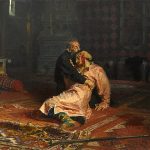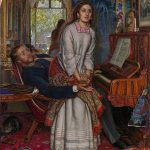Zinaida Yevgenyevna Serebriakova (1884-1967) was a distinguished Russian and later French painter, celebrated for her contribution to the early 20th-century art movements. She is renowned for her captivating portraits, self-portraits, and depictions of Russian peasantry, which radiate vitality, beauty, and an intimate connection to her subjects. Serebriakova’s oeuvre bridges the aesthetic sensibilities of pre-revolutionary Russia and the artistic explorations of the Parisian avant-garde, making her a pivotal figure in the transition of Russian art into the modern era.
Born into the artistic Benois family, Serebriakova’s early life was steeped in creativity. Her grandfather, Nicholas Benois, was a celebrated architect, and her uncle, Alexandre Benois, was a founder of the Mir iskusstva (World of Art) society, which played a significant role in the Russian cultural Renaissance at the turn of the century. This environment nurtured her talents and passion for art from a young age.
Serebriakova’s artistic education was informal but comprehensive, including private tutoring and regular visits to Italy and France, where she absorbed the influences of the European art scene. Her early work was marked by a vibrant realism and a profound empathy for her subjects, qualities that would define her entire career.
Her breakthrough came with the painting “At the Dressing-Table” (1909), a self-portrait that showcased her skill in capturing light, texture, and the subtleties of human expression. This painting earned her critical acclaim and a place among Russia’s leading artists. Serebriakova’s work from this period reflects the joy and beauty of everyday life, with a particular focus on women and children, set against the backdrop of the Russian countryside.
The 1917 Russian Revolution marked a turning point in Serebriakova’s life and career. The ensuing civil unrest and the nationalization of private property devastated her family’s estate, leading to financial hardship and the eventual separation from her children when she traveled to Paris on a short-term contract in 1924. The separation became permanent when she was unable to return to Soviet Russia, and Paris became her home for the rest of her life.
In Paris, Serebriakova’s style evolved in response to her new surroundings. She delved into the Parisian art scene, experimenting with the trends of Art Deco and continuing to develop her portraiture. Despite facing challenges, including financial difficulties and the struggle to reunite with her children, she achieved significant success, participating in numerous exhibitions and receiving commissions for portraits and decorative projects.
Throughout her expatriate years, Serebriakova maintained a profound connection to her Russian heritage, which continued to inspire her work. Her paintings from this period are characterized by a nostalgic elegance and a continued exploration of beauty in its various forms, whether in the human figure, landscapes, or still lifes.
Serebriakova’s legacy is that of a resilient and extraordinarily talented artist who navigated the upheavals of the 20th century with grace and determination. Her art transcends the personal and political challenges she faced, offering a luminous, tender vision of the world that resonates with audiences today.
Her work is celebrated in major museums in Russia, France, and around the world, standing as a testament to her skill, sensitivity, and unique artistic voice. Zinaida Serebriakova remains a symbol of the cultural richness of pre-revolutionary Russia and the vibrancy of the Russian émigré community in Paris, bridging two worlds through her remarkable body of work.






